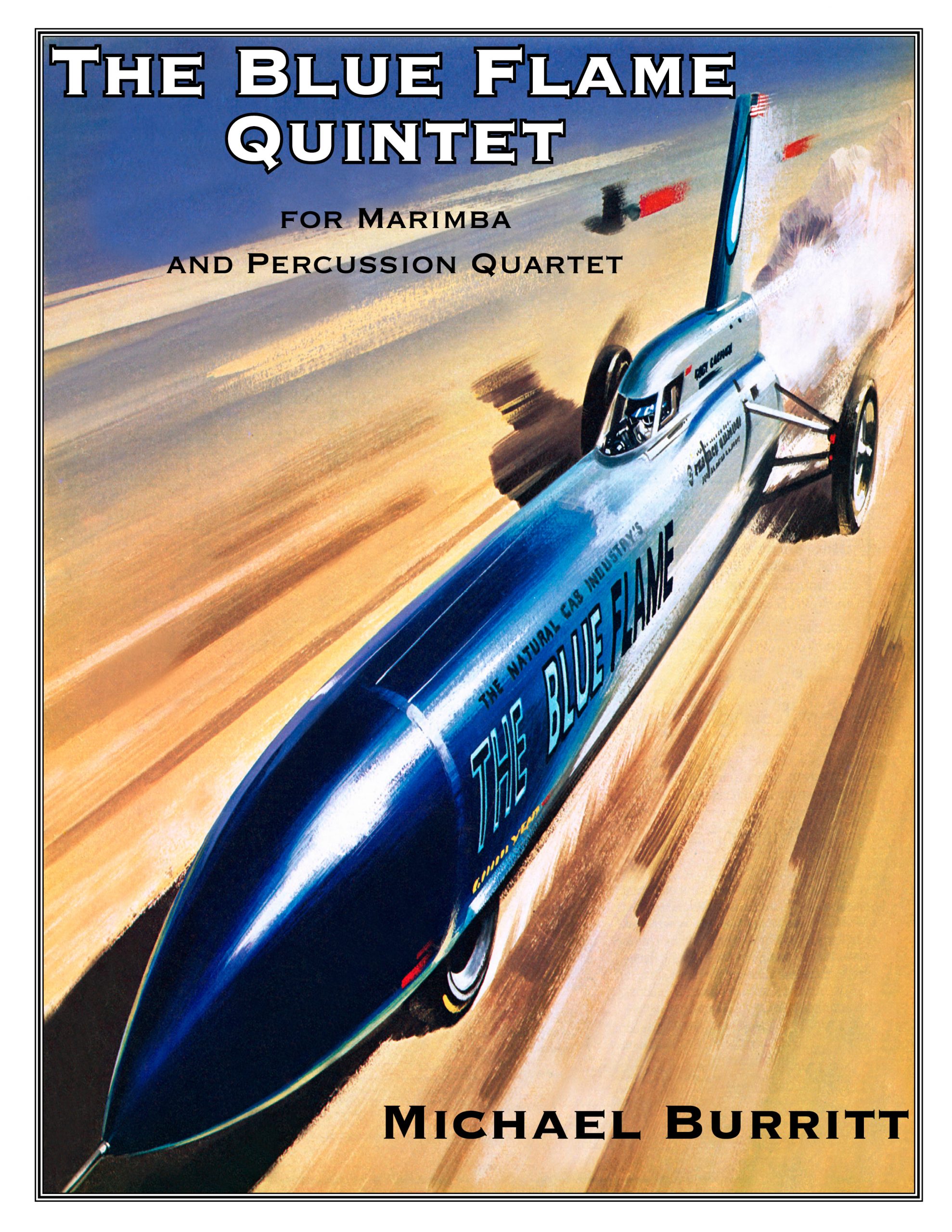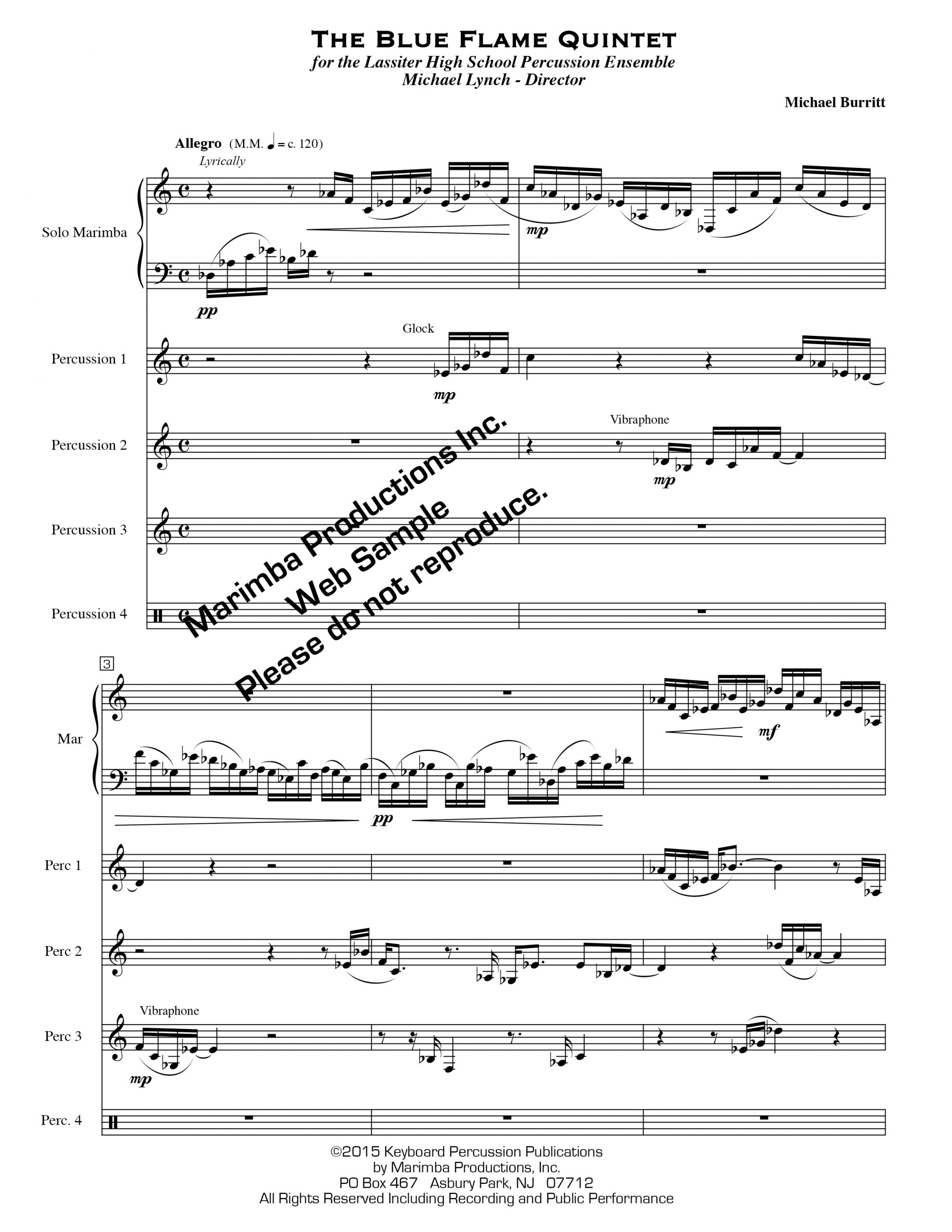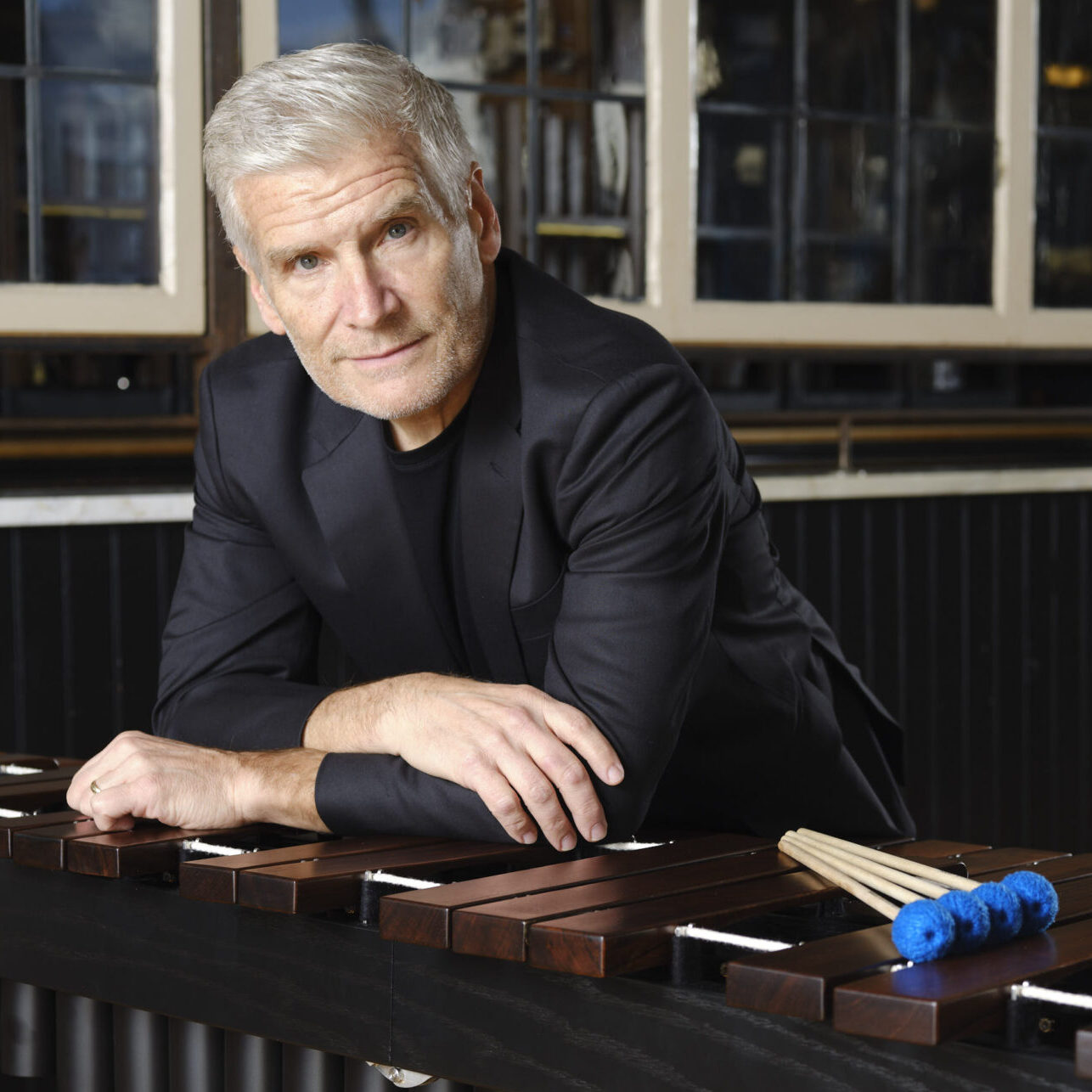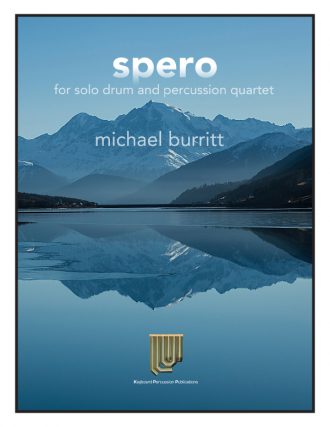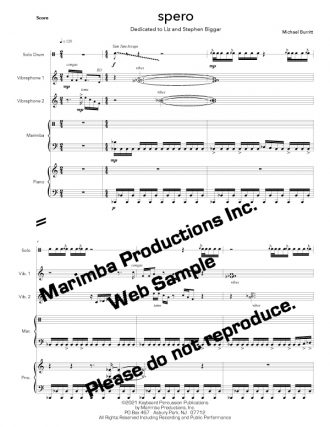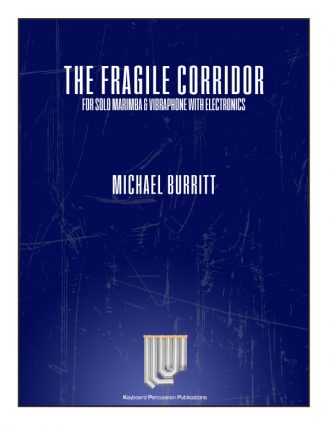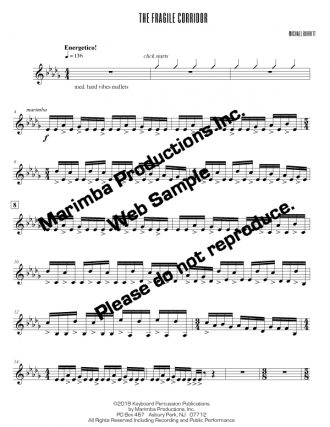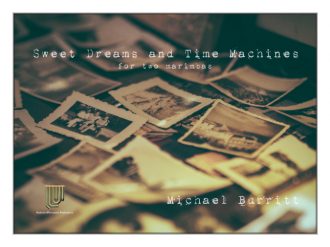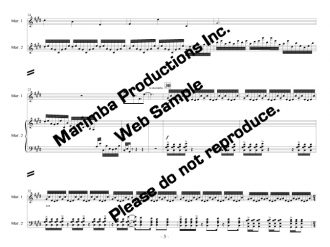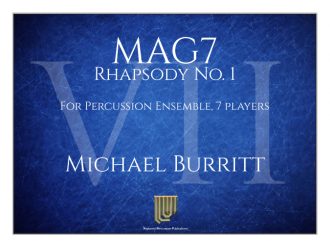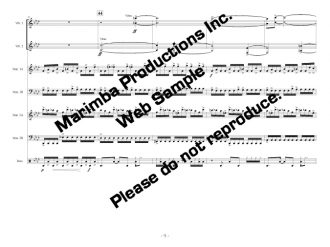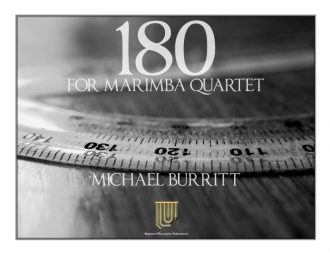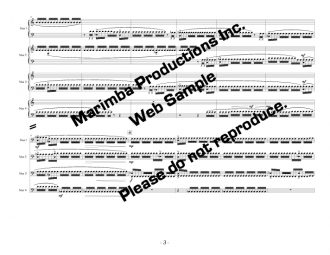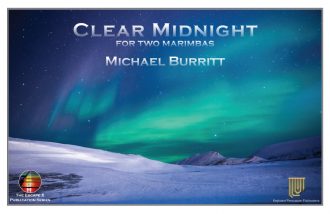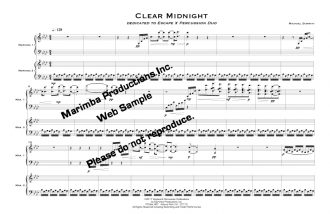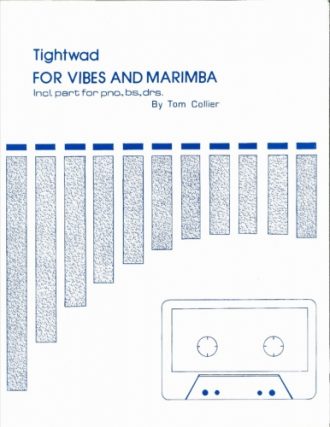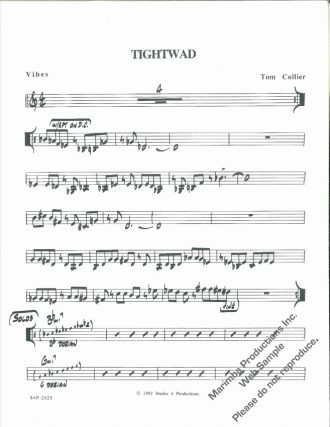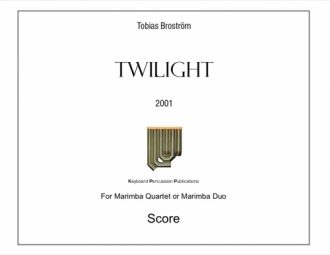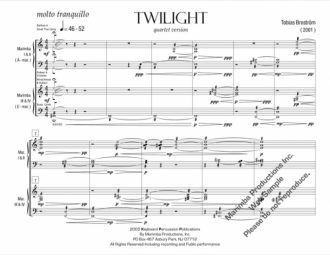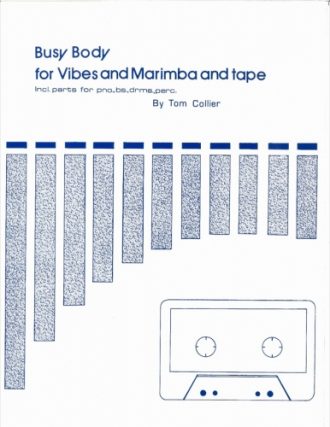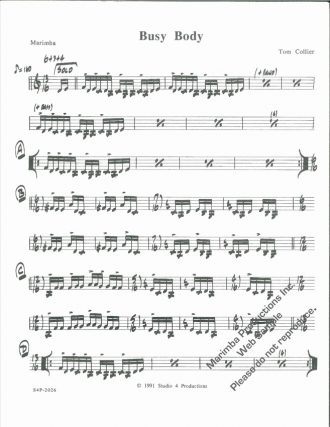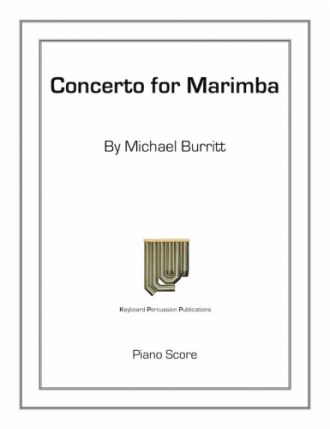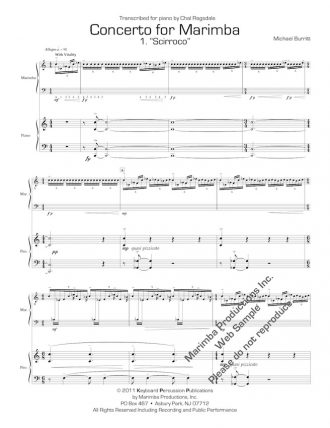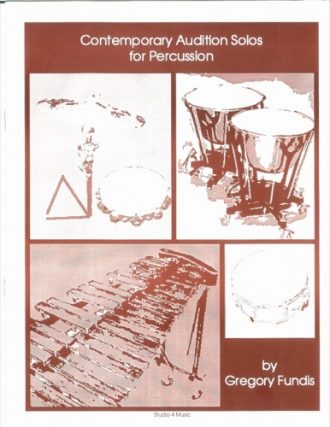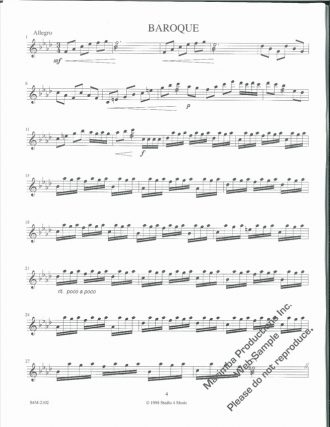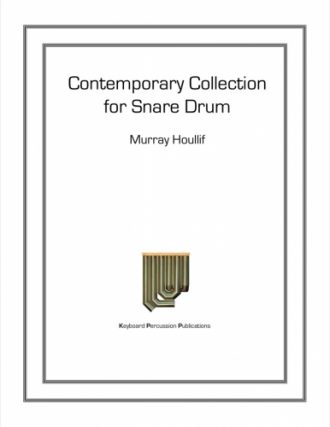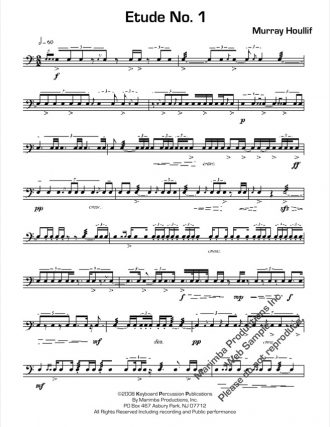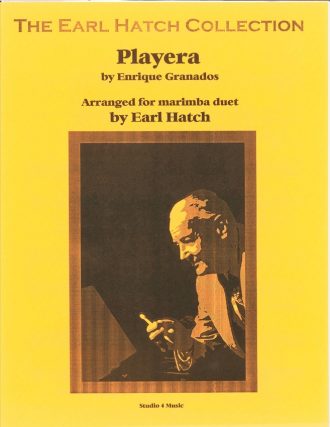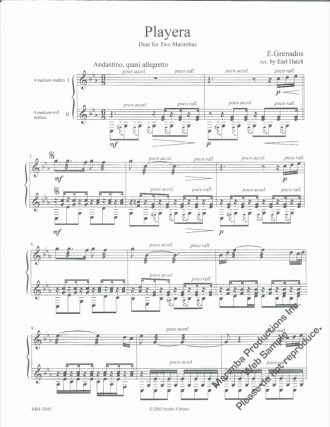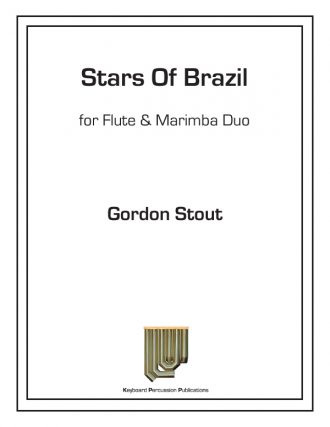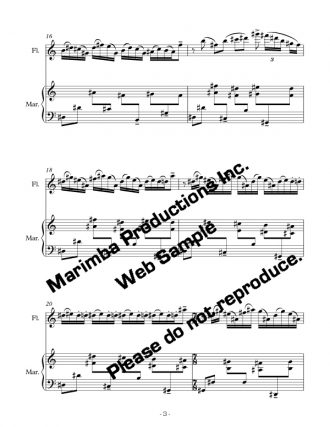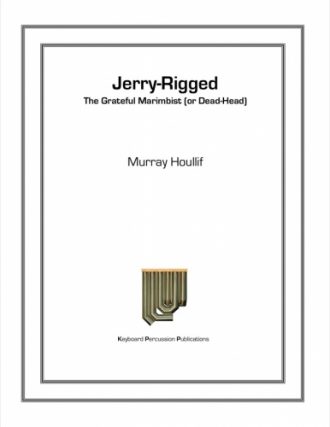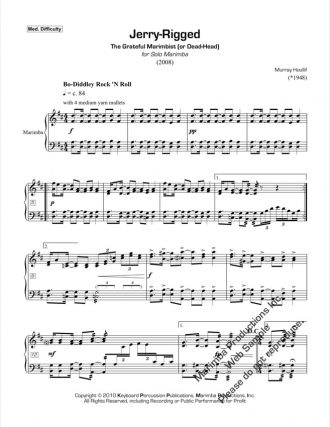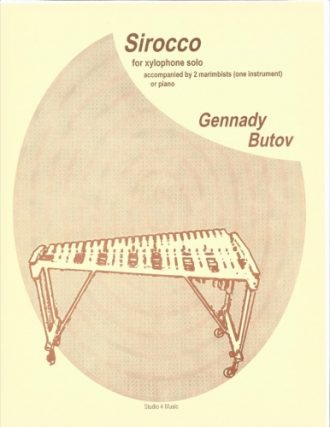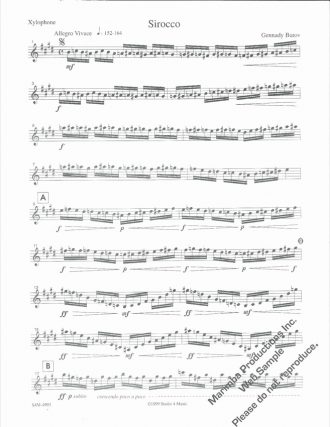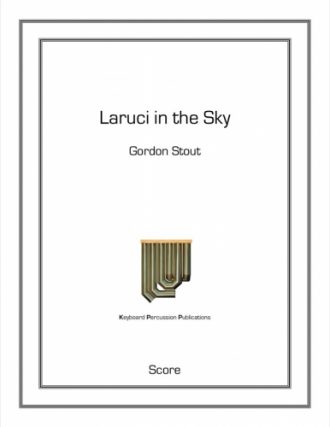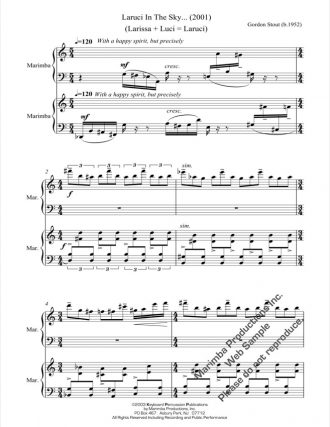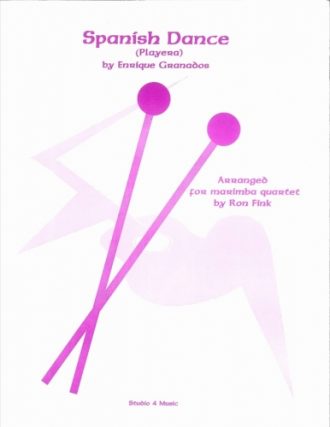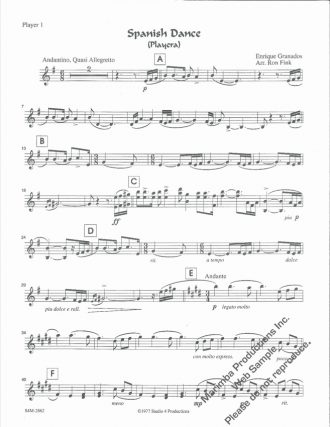The Blue Flame Quintet was written for the Lassiter High School Percussion Ensemble in 2005 and premiered at the Midwest International Band and Orchestra Convention in Chicago. The quintet is scored for solo marimba (5 octave), and four accompanying multiple percussionists. The orchestration includes tradtional instruments such as glockenspiel, vibraphone, bongos, conga drums, timbales, bass drum and cymbals. Non-conventional instruments include ankle bells, ribbon crasher, Chinese opera gong, bamboo clackers, cajon and caxixi.
In the process of writing Blue Flame, I was inspired by the thought of performaing with these wondefully young and enthusiastic musicians. I couldn’t help but remember my early days as a drummer and my first rock band, “The Blue Flame.” We named the band after the rocket car that broke the land speed record in 1970. (I must admit that I still have fantasies of being a rock star). So this is my chance, the marimba’s my guitar, and these guys are my band!
– MJB
“The Blue Flame Quintet” is another vehicle for hte marimba soloist with percussion ensemble accompaniment. The solo part is particularly advanced and was originally written with the composer as performer in mind.
The percussion writing appears easier than some of Burritt’s more recent works in this idio. There is some keyboard playing required, but the parts are not taxing. Parts are often “rock rhythm” based and rarely stray from the sixteenth-note grid. Several non-conventional percussion instruments are required, such as ribbon crasher, ankle bells, opera gongs, bamboo clackers, cajon and caxixi. Written originally for an advanced high school ensemble, it could certainly still be interesting for most collegiate ensembles. The most difficult thing for younger players will likely be trying to find the right balance with the soloist (the work requires a soloist not afraid to be heard).
Those familiar with Burritt’s writing will find very familiar ideas, including a solo marimba part full of virtuosic lateral passages (like Scirocco”), unrelenting groove sections, and aggressive figures that travel across the entire range of the instrument. In softer sections the quartet creates smooth, arpeggiated textures on the keyboards, while in louder moments the entire ensemble plays tutti rhythmic figures accented against more percussive gestures in the solo part. The work includes ample groove playing on cajon and djembe, and particularly arresting moments with shaker snad cajon in rhythmic unison with the solo part. Unfortunately, I’m not sure that the melodic material in “Blue Flame” is quite as memorable as some of Burritt’s other works in this genre (and perhaps only because several of them have become such canonical standards at this point).
Midway through, the soloist moves to djembe. After this djembe “jam session,” there is a passage requiring the marimbist to play on the edge of the bars with the shafts of the mallets (the same technique used in Schwantner’s “Velocities” and Stevens’ “Rhythmic Caprice”). Generally, there are just a few spares moments of repose, including a nice bowed crotale moment before the recapitulation. But ultimately “Blue Flame” is (like its namesake, the 1970 rocket car that shattered the land-speed record) a fast, rhythmically charged tune that doesn’t ever let up.
The work is roughly six minutes in duration and is sure to be a crowd pleaser. From a student ensemble perspective, it might be one of the most accessible of Burritt’s “marimba plus ensmeble” compositions. Fans of his compositions will not be disappointed.
– Phillip O’Banion, Percussive News – March 2017

